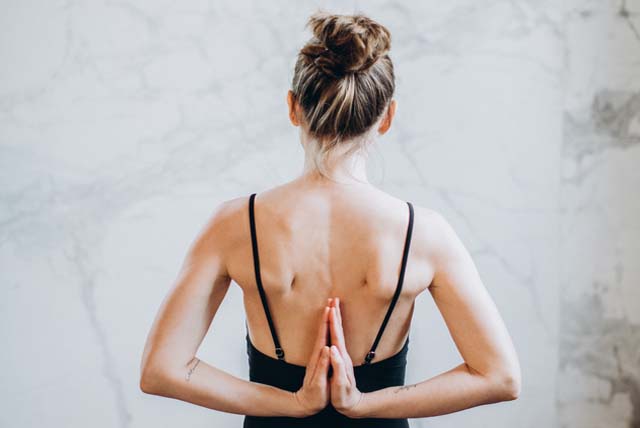Yoga for scoliosis

The word “scoliosis” is derived from the Greek word skol, which means twists and turns. In scoliosis, the spine forms an S curve (or reversed S) from side to side down the back, and at the same time the back of the spine rotates toward the concave side of the S, twisting the rib cage and making the sides of the back uneven.
The goal of yoga practice should not be to straighten our backs; we must learn to accept them as they are, not deny them or judge them. Instead, we must work to understand our backs and to relate to them with sensitivity and awareness. Healing is much more than straightening a scoliosis, or curing a disease. It is learning to love and nurture ourselves and trust our inner knowing to guide us to a vibrant state of being.
When the body is balanced and aligned with gravity, a yoga posture will be almost effortless. Before doing yoga, my body did not know what “balanced” felt like. Through yoga, I have learned that I can have a curved spine and still be balanced and graceful.
There are six major areas of the body to focus on while doing the yoga poses for scoliosis. These areas are very important in creating proper alignment, decreasing pain. and minimizing further curvature of the spine.
- Feet and Legs: When standing and walking, it is very important to place equal weight on both feet and to be aware of any imbalances. Strengthening the legs creates a solid foundation from which the spine can stretch and become freer, and it enables the legs, rather than the spine, to carry the weight of the body.
- Spine: Since this is where the scoliosis is located, it is important to focus on lengthening the spine, which tends to reduce the S curve.
- Psoas (Major and Minor): These two muscles (a pair on each side of the body) are the principal flexors of the thigh. They arise from the iliacus muscle and along the vertebral column and join to insert on the lesser trochanter of the femur. Together with the iliacus, they form a structural and functional unit called the iliopsoas. Besides flexing the thigh, the iliopsoas is an important postural muscle. During sit ting it balances the torso; in standing it counteracts the tendency of the torso to fall behind the line of gravity, which passes just in back of the hip joints. Keeping this muscle well toned aligns the lower limbs with the torso and frees the spine.
- Scapula: To prevent the upper back from rounding (a common problem in people with scoliosis), it is important to drop the shoulder blades down from the ears and draw them in toward the front of the body. To facilitate this movement, we must develop increased flexibility of the muscles surrounding the shoulder blades.
- Abdominal Muscles: To strengthen the abdominal muscles is very important with a scoliosis. If the abdominals are weak, then it causes the back muscles to overwork and therefore tighten. In extreme cases, it may cause lordosis or an extreme curve of the lower back particularly on the concave side of the lower back.
- Breath: Awareness of the breath is perhaps the most important thing to focus on while doing the yoga poses. Usually very little air enters the lung on the concave side of the spine. Sending the breath into the collapsed rib cage on this side can actually stretch the intercostal muscles and create more lung capacity. This creates more openness and evenness on both sides of the chest, from the inside out.
Source: http://www.yogajournal.com/article/practice-section/yoga-for-scoliosis/
